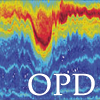
|
Kumar Ravi Prakash Postdoctoral Scholar rprakash@uw.edu Phone 929-877-4539 |
Research Interests
Physical Oceanography, Air-Sea Interactions, Tropical Cyclones
Education
Ph.D. Atmospheric & Oceanic science, Centre for Atmospheric Sciences (CAS), Indian Institute Of Technology Delhi (IIT Delhi), 2020
M.Tech Atmospheric Oceanic Sc. & Technology, Centre for Atmospheric Sciences (CAS), Indian Institute Of Technology Delhi (IIT Delhi), 2014
M.Sc. Mathematics, BR Ambedkar Bihar University, Muzaffarpur, 2010
|
Publications |
2000-present and while at APL-UW |
Taming turbulence closure in tidally driven simulations of coastal oceans and estuaries Harcourt, R.R., J.B. Mickett, and K.R. Prakash, "Taming turbulence closure in tidally driven simulations of coastal oceans and estuaries," Cont. Shelf Res., 296, doi:10.1016/j.csr.2025.105596, 2026. |
More Info |
1 Jan 2026 |
|||||||
|
A widespread prevalence of subsurface acoustic ducts impacting mid-frequency sound propagation was observed over the outer shelf and the continental slope during a field experiment in July–August 2022 in the Pacific Northwest coastal ocean of North America. Simulations of the coastal shelf ocean using LiveOcean, a tidally driven operational model (MacCready et al., 2021), based upon a widely used variant of the Regional Ocean Modeling System (ROMS), were compared with observations of the thermohaline stratification layers responsible for the ducts, and found to have a nearly complete absence of these acoustic features due to excessive parametrized mixing. After implementing additional realistic constraints in the 'k-ε' second moment closure (SMC) to control instabilities in the turbulence mixing model with low background mixing, the source of instabilities was identified in a coding error for the default, third-order upstream advection of the turbulence parameters for TKE k and its dissipation epsilon, a longstanding and significant bug impacting mixing parametrization, and one also found in the older SMC 'Mellor-Yamada 2.5' mixing parametrization option in ROMS. With code improvements, LiveOcean was able to successfully simulate the production of observed subsurface acoustic ducts. The primary process for generating the ducts along the outer shelf involves the southward transport of low sound speed water during upwelling, combined with the cross-shelf displacement of higher sound speed water from offshore beneath this layer in bottom-driven Ekman transport. |
|||||||||
Balancing role of the Arabian Sea mini warm pool in the ENSO-monsoon onset relationship Lahiri, S.P., V. Plant, T. Izumo, and K.R. Prakash, "Balancing role of the Arabian Sea mini warm pool in the ENSO-monsoon onset relationship," J. Clim., 38, 6109-6127, doi:10.1175/JCLI-D-24-0645.1, 2025. |
More Info |
1 Nov 2025 |
|||||||
|
The the Indian summer monsoon onset in Kerala (MoK) has large socioeconomic implications for the densely populated Indian subcontinent, yet understanding the associated air–sea interactions remains challenging for the scientific community. In this study, we first show that the preceding El Niño–Southern Oscillation (ENSO) accounts for approximately two-thirds of the interannual variability of the Arabian Sea mini warm pool (MWP), whereas the preceding Indian Ocean dipole (IOD) has minimal influence. Following an El Niño event, a strong anticyclone develops over the northern Arabian Sea from April to June due to the anomalous easterlies that weaken the mean southwesterly winds over the southeastern and central Arabian Sea. It, thus, simultaneously favors the MWP expansion in May and delays the MoK, establishing a positive correlation between the two (a strong MWP being statistically associated with a delayed onset). In contrast, after a La Niña event, the southwesterly monsoon winds remain strong, resulting in a weak or absent MWP. To examine the direct influence of the MWP on the MoK, we have employed a regional coupled atmosphere–ocean numerical model (RCM). The "noMWP" sensitivity experiments suggest that following an El Niño year, as the MWP intensifies, it draws winds toward the Kerala coast, enhancing convective activity and causing an early MoK. Consequently, the MWP helps advance the MoK, mitigating the delay that would otherwise be more pronounced after an El Niño. These findings underscore the importance of improving the observation and simulation of MWP dynamics to enhance monsoon forecasting. |
|||||||||
Influence of cyclonic and anticyclonic mesoscale oceanic eddies on thermodynamic characteristics of the near-surface atmospheric column Chandra, N., V. Pant, and K.R. Prakash, "Influence of cyclonic and anticyclonic mesoscale oceanic eddies on thermodynamic characteristics of the near-surface atmospheric column," Q. J. R. Meteorolog. Soc., EOR, doi:10.1002/qj.5036, 2025. |
More Info |
22 Jul 2025 |
|||||||
|
A regional coupled atmosphere–ocean model was used to investigate the effects of mesoscale oceanic anticyclonic eddies (AEs) and cyclonic eddies (CEs) on the atmospheric column above them. The model was simulated from 29 December 2018 to 20 April 2019. The model-simulated surface wind, mean sea level pressure, ocean temperature, and salinity were validated against satellite and in-situ observations. The simulated parameters show a good agreement with the observations. An eddy detection and tracking algorithm was applied to identify mesoscale oceanic eddies from the model output. The thermodynamic properties of the atmospheric column above the detected eddies were analyzed to examine the roles of eddies on the atmospheric column. The Convective Available Potential Energy (CAPE), Convective Inhibition (CIN), water vapor mixing ratio (WMR), and precipitable water (PW) were computed and compared for AEs and CEs. The vertical profiles of moist static energy (MSE) showed reasonable differences (~10% higher over CEs than AEs) for most of thermodynamic properties except CAPE. The correlation between the relative vorticity of these oceanic eddies and the air column above eddies supported these thermodynamic differences between AEs and CEs. The study demonstrates a role of oceanic eddies in modulating the thermodynamic characteristics of the lower atmospheric column over eddy regions. |
|||||||||






